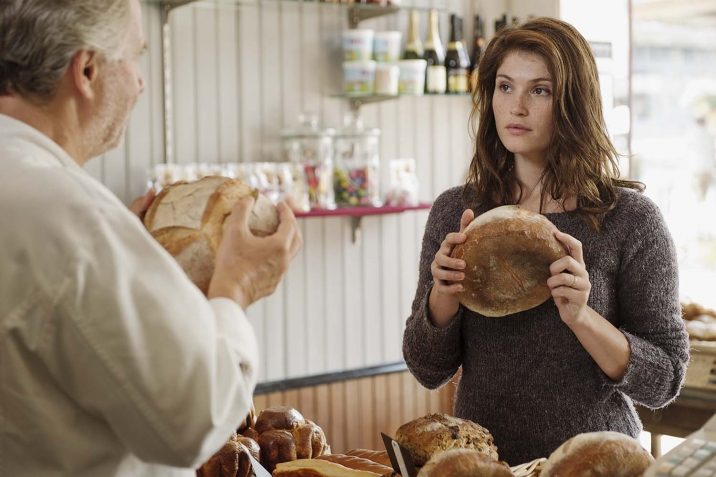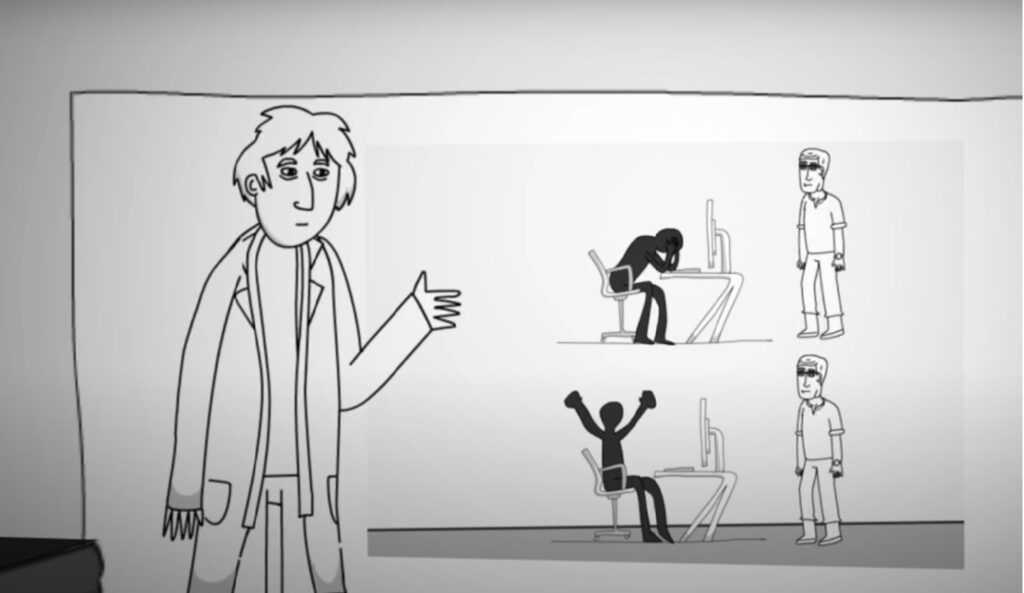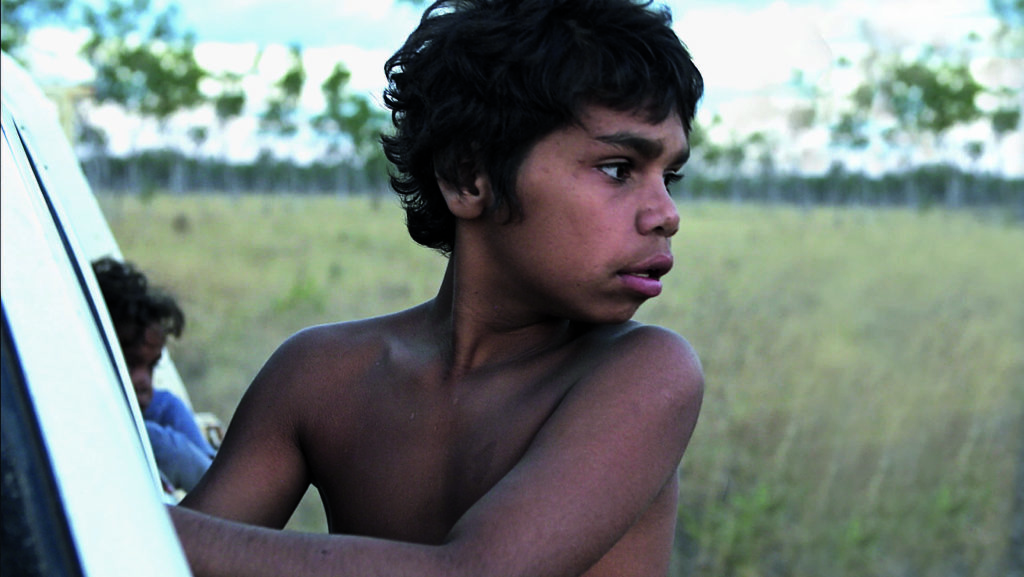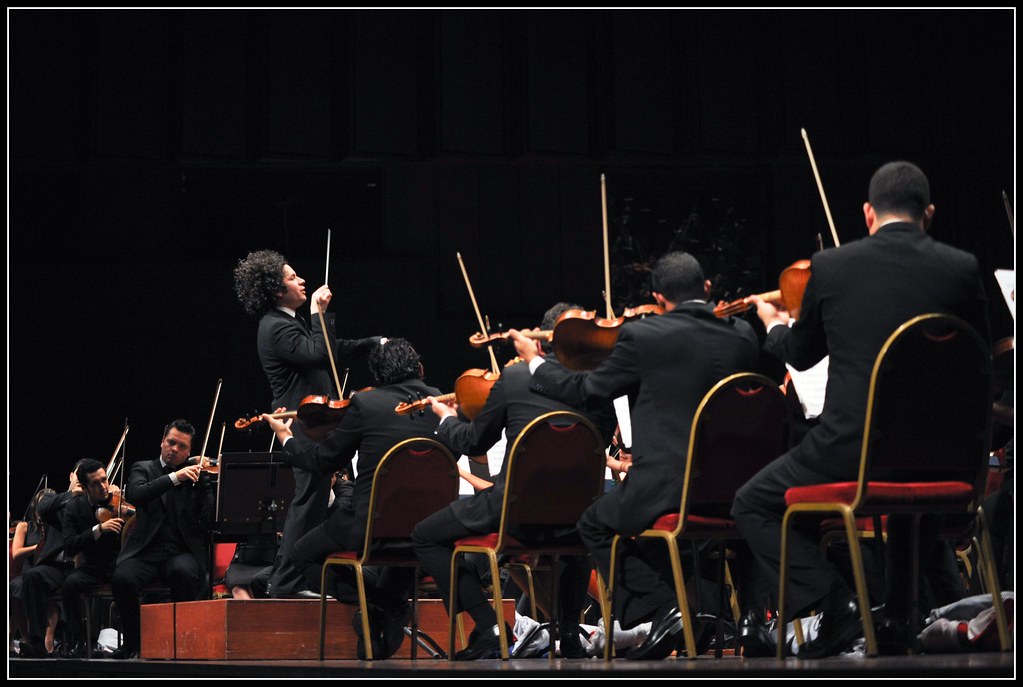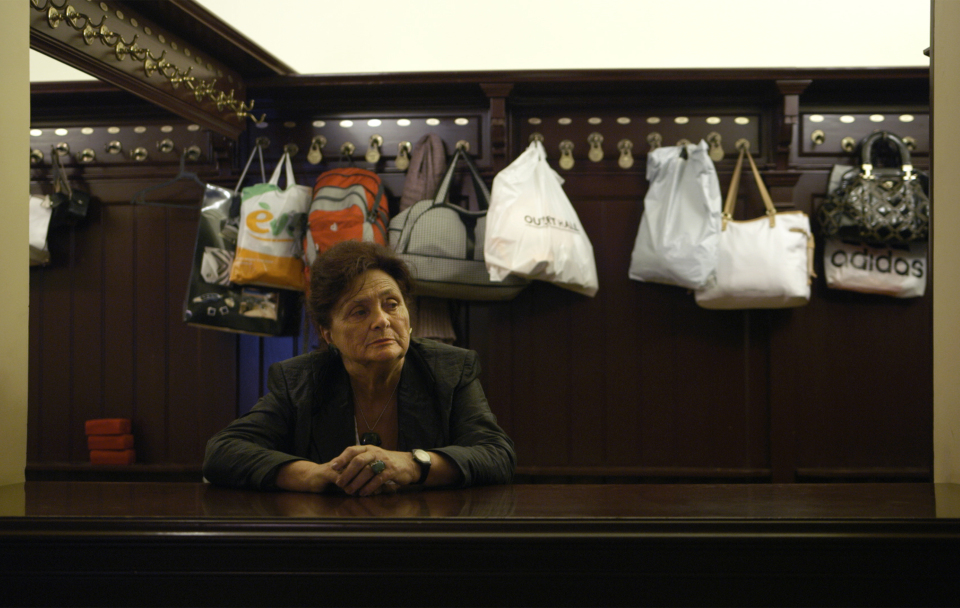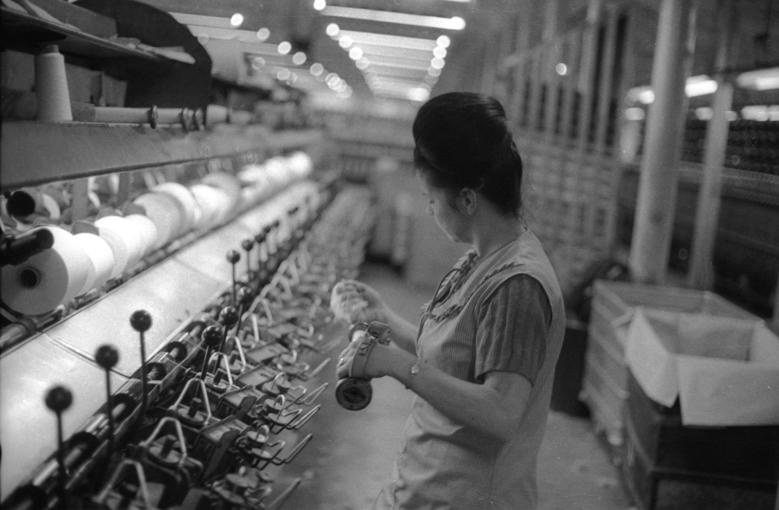Finding and Cultivating the Self in Hair: On the Wizardry of Hairdressers
All of us have daily, lifelong, often profound relationships with our hair, our hairstyles and hairdressers. In fact, we all know our ways to get along with both — and expect flawless performance from our hair professionals, being familiar with their procedures. However, our recently published book “Haarige Kunst” (2020) widens this view: Being a “good” hairdresser is not only a matter of the aspects easily visible and recognisable which we all are familiar with: It is not the ‘what’ but, above all, the ‘how’ that is decisive.
This puts the focus on some hidden, even concealed competencies: specifically, a perception with all senses, a feeling and sensitivity for both, the client and the unique characteristics of hair. Hair itself deserves and asks for special attention. This is demonstrated by its outstanding role in cultural-historical developments and arts — as reported in our book and also shown in an amusing way in the 10-minute educational film “Hair Dress Through the Ages” from 1950.
Considering the ‘culturality’ of hair in our book including the myths, symbolisms, and religious, political and social meanings of hairstyles, we tried to go beyond the surface of the pure act of hairdressing. This also brings to light: Hair, no matter how it may be ‘domesticated’ and ‘treated’, can only be dealt with by accepting the fact that it is a natural opponent to the human efforts to create order. Hair is stubborn and it has got its own will. We are used to dealing with our hair as an object belonging to us like our clothing, removable, changeable, in the same way. Yet, hair, however treated, however cut short or artificially lengthened, however dyed or twisted, is and remains an immediate part of the human body and its personal constitution.
Being treated or not, hair is not a ‘lifeless’ object. It lives and is a real ‘counterpart’ — and therefore to be understood and treated as such. Expert knowledge and technical skills are undoubtedly of great importance in this context. What’s decisive: A ‘good’ hairdresser, as it appears to us, is a person promoting the ‘art’ of the craft, a feeling and a sensibility for the ‘object’ being worked with rather than just on, as a counterpart.
As it appears, recent discussions on the occupational profile of hairdressers and their training hardly take this aspect into consideration – as can be seen by browsing through current occupational films, for example, “Friseur/in Ausbildung” of the Bavarian Broadcasting Corporation (BR) or “Friseur/in” on BERUFE.TV, the film portal on occupations of the Federal Employment Agency (BA) in Germany. These films tend to focus on aspects of chemical-pharmaceutical knowledge and instrumental skills. There, ‘creativity’ is a term used rather frequently, but in largely unspecific ways when it comes to describing the wizardry of hairdressing. The hair remains a mere object. It seems to us, however, a good hairdresser finds, leaves and cultivates the self in the hair.
Hans G. Bauer is a sociologist and works for GAB Munich, a research institute in the field of vocational research and training.
Fritz Böhle is a sociologist and head of the research unit for socio-economics in the world of work at the University of Augsburg.
References:
Bauer, Hans G. and Fritz Böhle (2020), Haarige Kunst. Über den Eigensinn des Haars und das Können von Friseuren, Springer.
Bundesagentur für Arbeit (2021), Friseur/in – Berufe.TV
Hair Dress Through The Ages, Bildungsfilm, 1950
Friseur/in Ausbildung, 2019, Bavarian Broadcasting Corporation (BR)
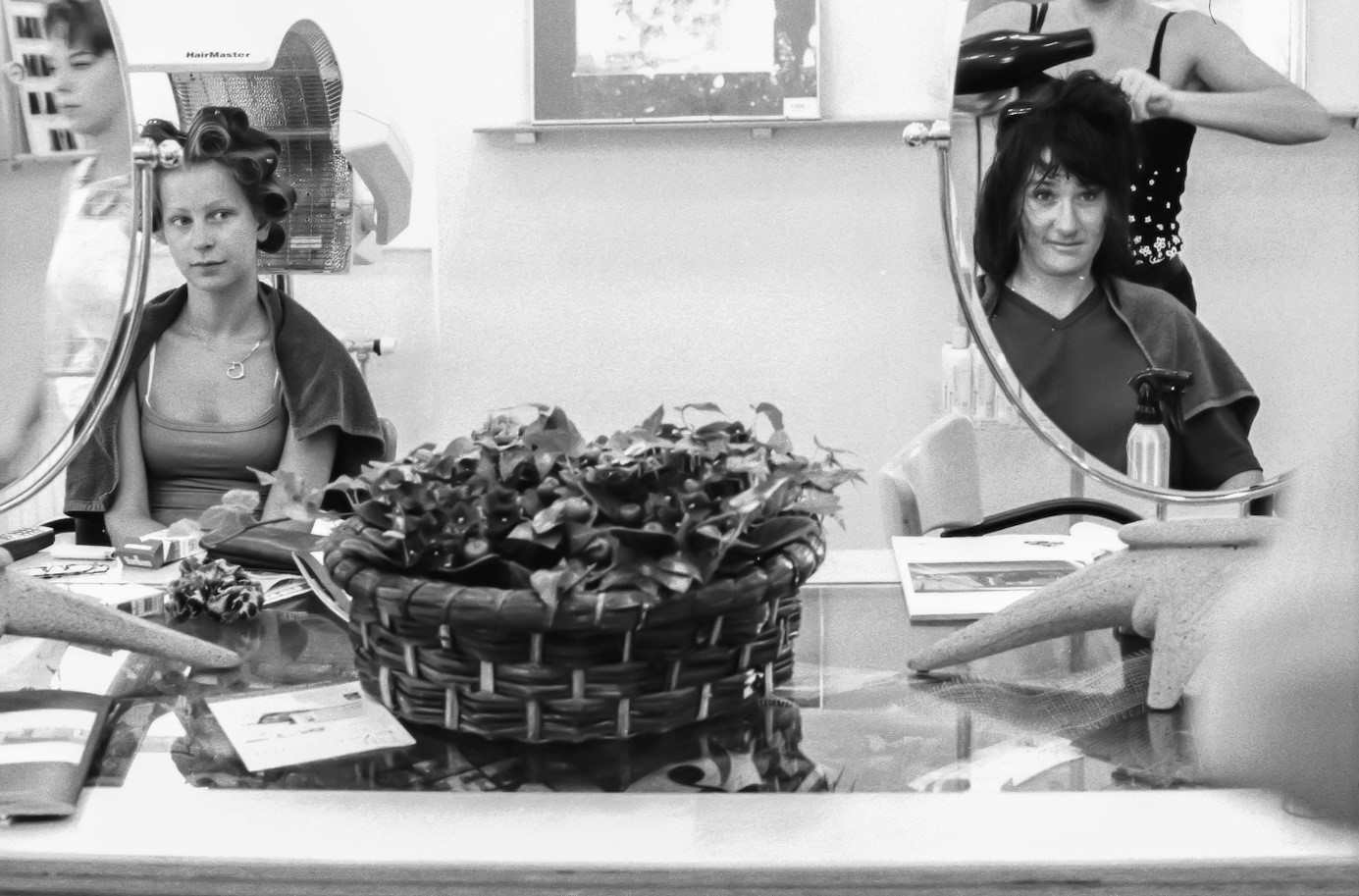
Figaro 7, from "Harrige Kunst" Hans G. Bauer and Fritz Böhle
© Nadia Gentile

Figaro 6, from: "Harrige Kunst" von Hans G. Bauer and Fritz Böhle
© Nadia Gentile
Finding and Cultivating the Self in Hair: On the Wizardry of Hairdressers
All of us have daily, lifelong, often profound relationships with our hair, our hairstyles and hairdressers. In fact, we all know our ways to get along with both — and expect flawless performance from our hair professionals, being familiar with their procedures. However, our recently published book “Haarige Kunst” (2020) widens this view: Being a “good” hairdresser is not only a matter of the aspects easily visible and recognisable which we all are familiar with: It is not the ‘what’ but, above all, the ‘how’ that is decisive.
This puts the focus on some hidden, even concealed competencies: specifically, a perception with all senses, a feeling and sensitivity for both, the client and the unique characteristics of hair. Hair itself deserves and asks for special attention. This is demonstrated by its outstanding role in cultural-historical developments and arts — as reported in our book and also shown in an amusing way in the 10-minute educational film “Hair Dress Through the Ages” from 1950.
Considering the ‘culturality’ of hair in our book including the myths, symbolisms, and religious, political and social meanings of hairstyles, we tried to go beyond the surface of the pure act of hairdressing. This also brings to light: Hair, no matter how it may be ‘domesticated’ and ‘treated’, can only be dealt with by accepting the fact that it is a natural opponent to the human efforts to create order. Hair is stubborn and it has got its own will. We are used to dealing with our hair as an object belonging to us like our clothing, removable, changeable, in the same way. Yet, hair, however treated, however cut short or artificially lengthened, however dyed or twisted, is and remains an immediate part of the human body and its personal constitution.
Being treated or not, hair is not a ‘lifeless’ object. It lives and is a real ‘counterpart’ — and therefore to be understood and treated as such. Expert knowledge and technical skills are undoubtedly of great importance in this context. What’s decisive: A ‘good’ hairdresser, as it appears to us, is a person promoting the ‘art’ of the craft, a feeling and a sensibility for the ‘object’ being worked with rather than just on, as a counterpart.
As it appears, recent discussions on the occupational profile of hairdressers and their training hardly take this aspect into consideration – as can be seen by browsing through current occupational films, for example, “Friseur/in Ausbildung” of the Bavarian Broadcasting Corporation (BR) or “Friseur/in” on BERUFE.TV, the film portal on occupations of the Federal Employment Agency (BA) in Germany. These films tend to focus on aspects of chemical-pharmaceutical knowledge and instrumental skills. There, ‘creativity’ is a term used rather frequently, but in largely unspecific ways when it comes to describing the wizardry of hairdressing. The hair remains a mere object. It seems to us, however, a good hairdresser finds, leaves and cultivates the self in the hair.
Hans G. Bauer is a sociologist and works for GAB Munich, a research institute in the field of vocational research and training.
Fritz Böhle is a sociologist and head of the research unit for socio-economics in the world of work at the University of Augsburg.
References:
Bauer, Hans G. and Fritz Böhle (2020), Haarige Kunst. Über den Eigensinn des Haars und das Können von Friseuren, Springer.
Bundesagentur für Arbeit (2021), Friseur/in – Berufe.TV
Hair Dress Through The Ages, Bildungsfilm, 1950
Friseur/in Ausbildung, 2019, Bavarian Broadcasting Corporation (BR)

Figaro 7, from "Harrige Kunst" Hans G. Bauer and Fritz Böhle
© Nadia Gentile

Figaro 6, from: "Harrige Kunst" von Hans G. Bauer and Fritz Böhle
© Nadia Gentile

The baker’s routine gestures: a professional ‘classic’?
In contemporary cinema, we often don’t question seemingly cliché images of bakers at work as seen in Antoine Fontaine's "Gemma Bovery" (2014) or Luke Jin's short film "La Boulangerie" (2017), but perhaps we should.
Essential Workers vs. Bullshit Jobs
How will the Covid-19 pandemic change the world of work? Will essential workers be more valued in the future or will ‘bullshit’ jobs continue to increase?
Plea for autochthone education systems
'In my blood it runs' (2019) is an intimate portrait of an Aboriginal boy and his family, as well as testimony to the glaring shortcomings of the Australian education system in dealing with their indigenous population.
Efficiency kills
US economist William J. Baumol found out why the efficiency principle is killing the service sector - and ultimately contributing to the COVID-19 mortality rate.
The unsung sing
In the second part of his trilogy about people in unsung professions, "Secondo Me" (2016), Pavel Cuzuioc accompanies three cloakroom attendants at three European opera houses and welcomes the everyday to stage.
Comparative work studies with the camera: Darcy Lange
With his camera, the artist Darcy Lange provided important scientific material on work and education, which still begs to be analysed in social and educational research.

About this blog
By selecting a film or an image, this blog literally illustrates the vast sphere of work, employment & education in an open collection of academic, artistic and also anecdotal findings.
About us
Konrad Wakolbinger makes documentary films about work and life. Jörg Markowitsch does research on education and work. They are both based in Vienna. Information on guest authors can be found in their corresponding articles.
More about
Interested in more? Find recommendations on relevant festivals, film collections and literature here.
About this blog
With picking a film or an image, this blog literally illustrates the vast sphere of work, employment & education in an open collection of academic, artistic and also anecdotal findings.
About us
Konrad Wakolbinger makes documentary films about work and life. Jörg Markowitsch does research on education and work. We both work in Vienna. Information on guest authors can be found in their respective articles.
More about
Interested in more? Find recommendations on relevant festivals, film collections and literature here.


